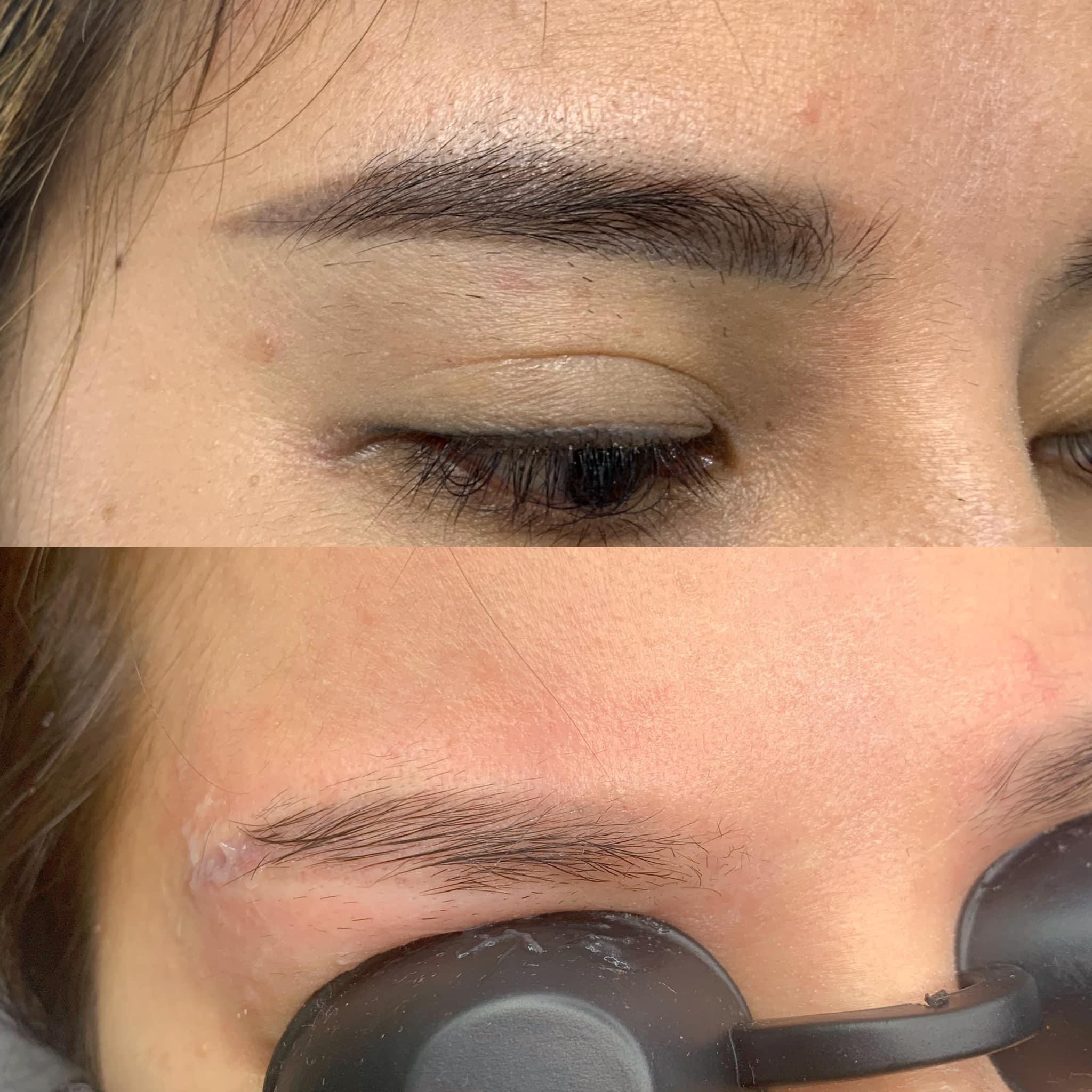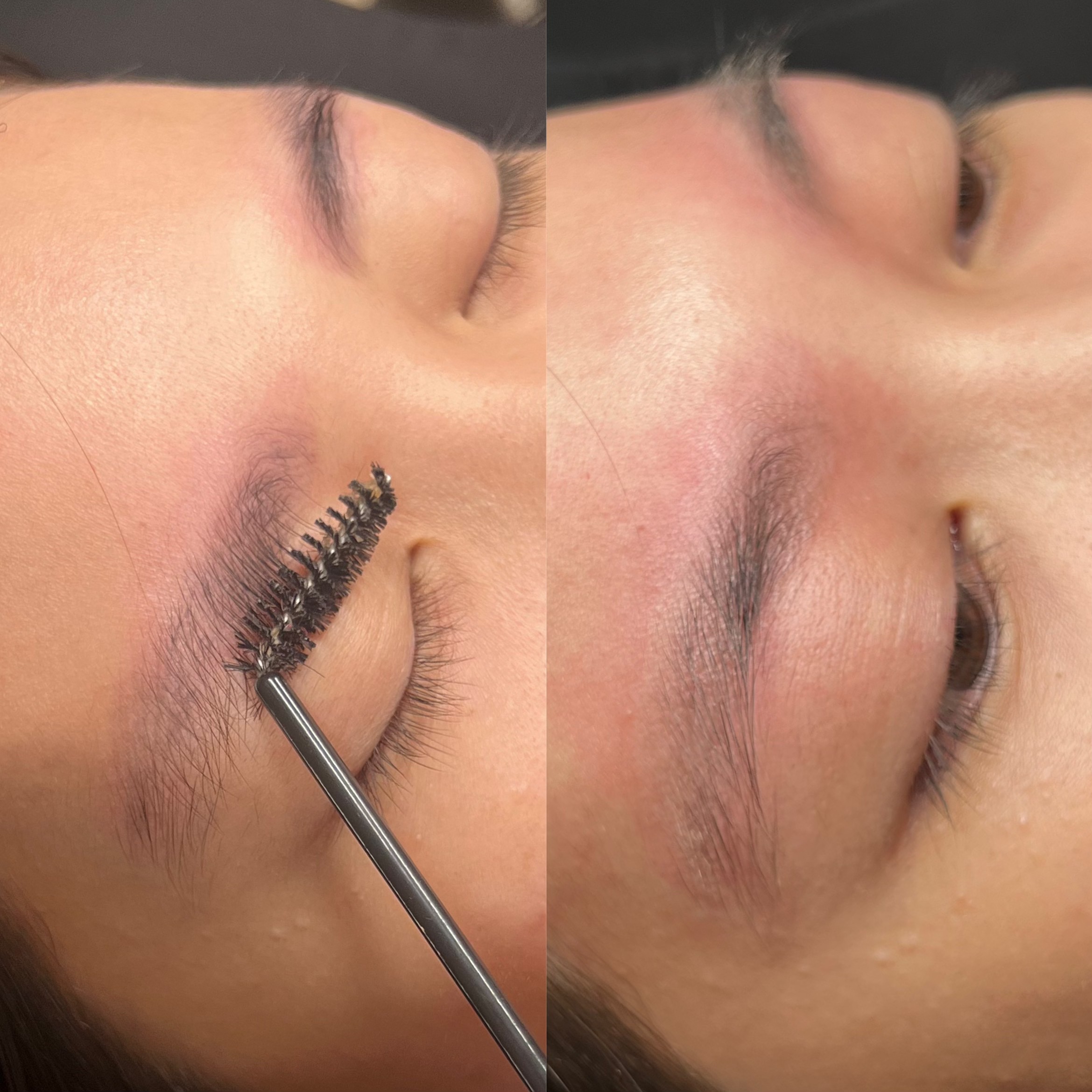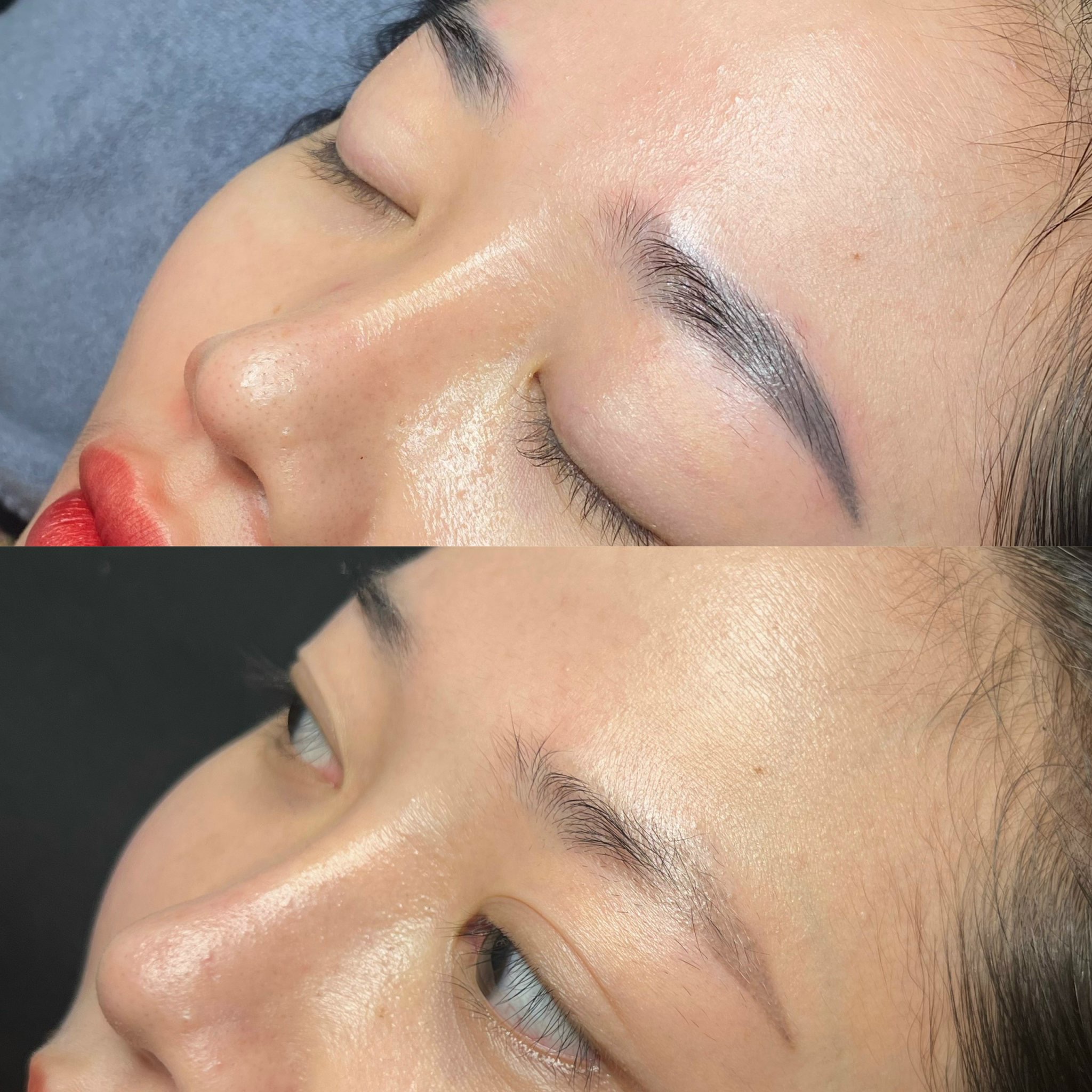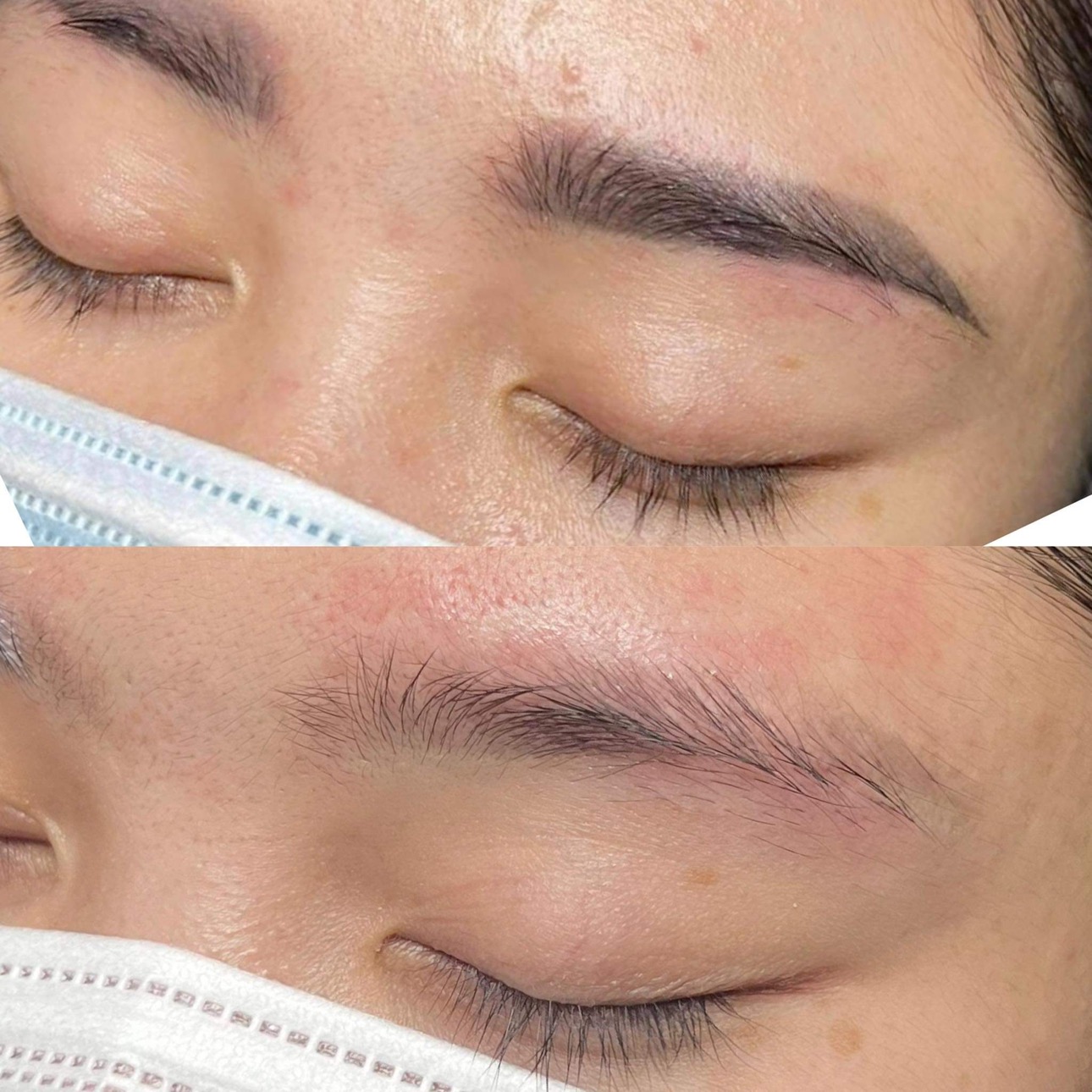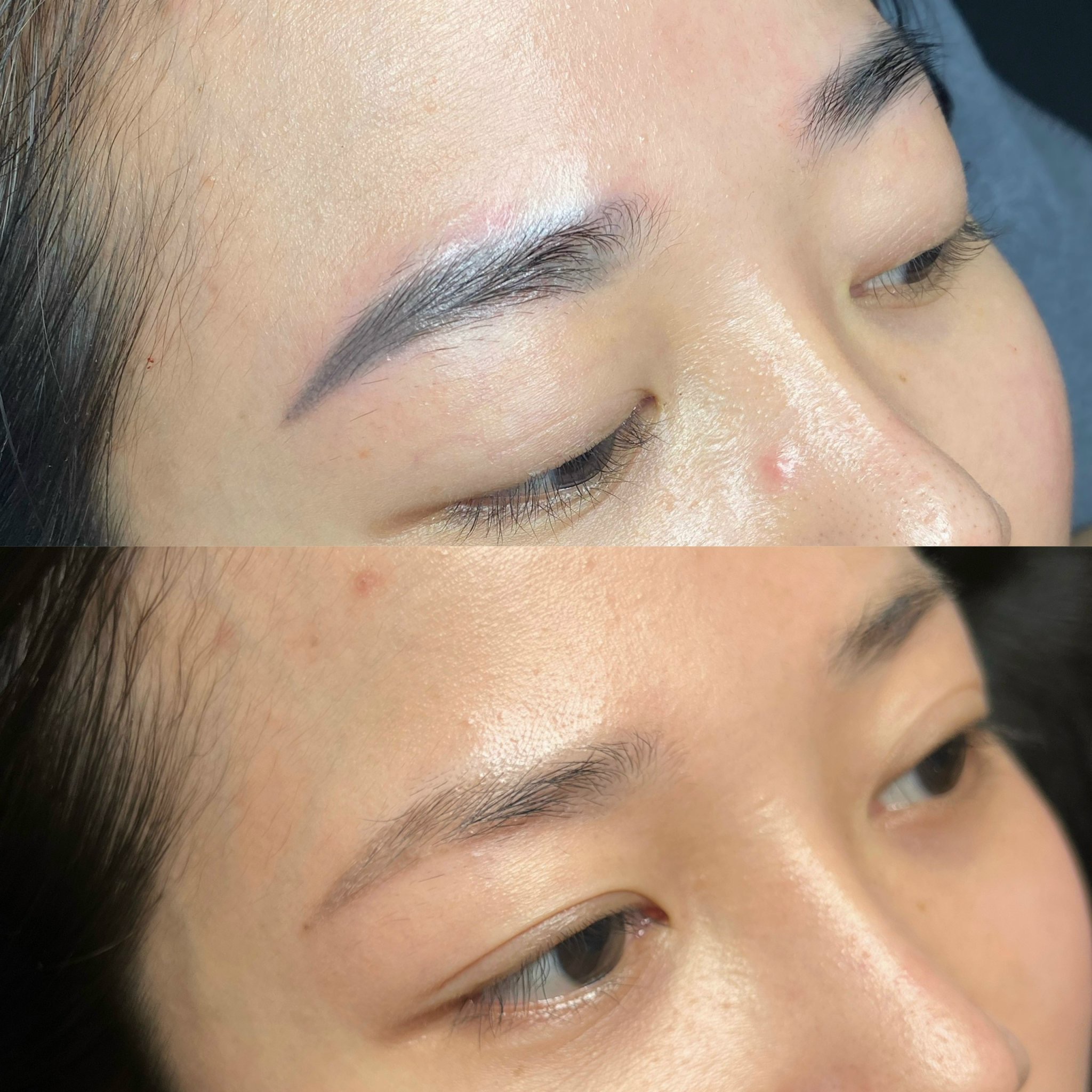Pre-treatment instructions:
Pre-care instructions are important to follow before undergoing laser tattoo removal to ensure a safe and effective procedure. Here are common pre-care instructions for laser tattoo removal, especially when dealing with an eyeliner tattoo:
- Consultation:
Schedule a consultation with a qualified laser technician or dermatologist. Discuss your medical history, any existing health conditions, and medications you are taking. This consultation helps determine if you are a suitable candidate for laser tattoo removal.
- Sun Protection:
Avoid prolonged sun exposure to the tattooed area for at least four weeks before the procedure. Sunburned or tanned skin can increase the risk of complications during laser treatment.
- No Tanning Beds:
Avoid using tanning beds in the weeks leading up to the laser removal. Tanned skin is more prone to adverse reactions and may affect the effectiveness of the laser.
- Avoid Topical Products:
Refrain from applying any creams, lotions, or makeup to the tattooed area on the day of the procedure. The skin should be clean and free of any products to ensure optimal laser penetration.
- Discontinue Certain Medications:
Inform your laser technician about any medications you are taking. Some medications, such as photosensitizing drugs, can increase the risk of adverse reactions. Your technician may advise discontinuing certain medications before the procedure.
- No Recent Cosmetic Procedures:
Avoid recent cosmetic procedures, such as chemical peels or microdermabrasion, in the area to be treated. These procedures can affect the skin’s sensitivity and may interfere with laser treatment.
- Eye Protection:
If the eyeliner tattoo is near the eyes, discuss with the technician how to protect your eyes during the laser procedure. Specialized eye shields or protective goggles may be used to prevent any laser exposure to the eyes.
- Discuss Medical History:
Inform your technician about any history of scarring, keloid formation, or other skin conditions. This information helps them tailor the laser treatment to your specific needs.
- Hydrate:
Stay well-hydrated in the days leading up to the procedure. Hydrated skin can respond better to laser treatment.
- Follow Technician’s Recommendations:
Follow any additional pre-care instructions provided by your laser technician. They may have specific recommendations based on the type of laser being used and your skin type.
It’s crucial to communicate openly with your laser technician, providing them with accurate information about your health and following their recommendations. This ensures a safer and more effective laser tattoo removal experience.
Laser Removal Tattoo Procedure:
The laser tattoo removal procedure involves using specialized laser equipment to target and break down the pigment in the tattoo. Here is an overview of the typical laser tattoo removal process:
- Consultation:
Before the procedure, you’ll have a consultation with a qualified laser technician or dermatologist. During this consultation, your medical history, skin type, and details about the tattoo will be assessed to determine the appropriate laser settings.
- Patch Test:
In some cases, a patch test may be performed. This involves exposing a small area of the tattoo to the laser to assess how the skin reacts and to determine the optimal laser settings.
- Eye Protection:
If the tattoo is close to the eyes, the technician will provide protective eyewear or shields to prevent any exposure of the eyes to the laser light.
- Cooling or Numbing:
Depending on the laser technology used and the sensitivity of the treated area, the technician may apply a cooling gel or use a cooling device to minimize discomfort. In some cases, a numbing cream may be applied.
- Laser Treatment:
The laser emits short pulses of intense light that are absorbed by the tattoo pigment. The energy from the laser breaks down the pigment into smaller particles.
- Disintegration of Pigment:
The fragmented pigment particles are then naturally processed and eliminated by the body’s immune system. This process occurs gradually over several weeks.
- Session Duration:
The duration of each laser tattoo removal session can vary depending on the size, color, and complexity of the tattoo. Sessions typically last between 15 minutes to an hour.
After Care Instructions:
Aftercare is crucial for the success of laser tattoo removal and to promote proper healing. Here are common aftercare instructions following a laser tattoo removal procedure:
- Keep the Treated Area Clean:
Gently clean the treated area with mild soap and water. Pat the area dry with a clean, soft cloth or towel.
- Apply Healing Ointment:
Depending on the recommendations of your laser technician, you may be advised to apply an antibacterial ointment or a healing ointment to the treated area. This helps keep the area moisturized and promotes healing.
Avoid Sun Exposure:
Protect the treated area from direct sunlight. Sun exposure can increase the risk of complications and hinder the healing process. Use sunscreen with high SPF on the treated area if it cannot be covered.
- Avoid Scratching or Picking:
Resist the urge to scratch or pick at the treated area. Let any scabs or dry skin fall off naturally to avoid disrupting the healing process and pigment elimination.
- Keep the Area Dry:
Avoid activities that can make the treated area excessively moist, such as swimming or soaking in hot tubs. Keep the area dry during the initial healing period.
Avoid Tight Clothing:
Wear loose-fitting clothing over the treated area to prevent irritation and friction.
No Makeup or Skincare Products:
Avoid applying makeup or skincare products directly on the treated area for a few days. This includes lotions, creams, and other cosmetics.
Stay Hydrated:
Drink plenty of water to stay hydrated. Hydrated skin tends to heal more efficiently.
Follow Technician’s Instructions:
Adhere to any specific aftercare instructions provided by your laser technician. They may recommend additional steps or precautions based on the individual characteristics of your tattoo and skin.
Avoid Strenuous Exercise:
Refrain from engaging in strenuous exercise or activities that may cause excessive sweating for a few days after the procedure.
Attend Follow-Up Appointments:
Attend any scheduled follow-up appointments with your laser technician. These appointments allow the technician to assess the progress of the tattoo removal and make any necessary adjustments to the treatment plan.
It’s essential to be diligent in following these aftercare instructions to optimize the results of laser tattoo removal and minimize the risk of complications. If you have any concerns during the healing process or notice unusual reactions, contact your laser technician for guidance. Additionally, be patient, as the complete results of laser tattoo removal may take several sessions and weeks to become apparent.

